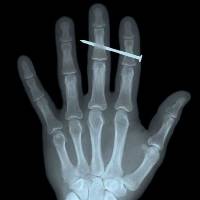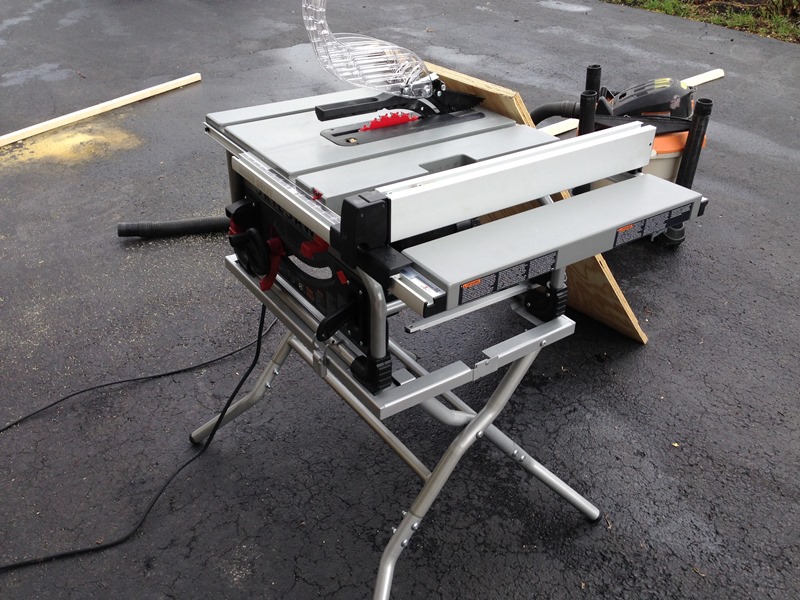 Any power tool can be dangerous if not used properly. Now it’s time to post a few tips on how to keep yourself safe when using power tools. Please pass this article on to all of your friends that use power tools!
Any power tool can be dangerous if not used properly. Now it’s time to post a few tips on how to keep yourself safe when using power tools. Please pass this article on to all of your friends that use power tools!
According to safety experts, more than 8 percent of industrial accidents result from bad power tool use. Whether it’s using the wrong tool for the job, carelessness or failing to wear protective gear, the consequences are often terrible.
Most power tool accidents are preventable. McGill, a leading provider of electrical safety equipment, offers the following checklist for safely using power tools.
- Use tools only for the specific task they’re designed for, and never operate any tool – power or manual – unless you’re trained to do so.
- Carefully read the owner’s manual before using a tool.
- Inspect power tools before each use. If parts are worn or damaged – especially cords that become frayed – replace or repair them. Because vibration can loosen the tool’s parts, its screws, nuts and bolts may need tightening
- Keep workshops and storage spaces clean and dry to prevent accidents. Sparks ignite scraps, sawdust and solvents. Water conducts electricity.
- Prior to plugging or unplugging tools, be sure the power switch is turned to “OFF.” And never disconnect power by pulling on the cord. Instead, remove the plug from the outlet.
- If working on a ladder or scaffolding, carefully set your power tools on a flat surface or in a bin secured to the ladder itself.
- Always use a ground fault circuit interrupter (GFCI) when working with power tools. Plug-in GFCIs for indoor and outdoor use stop power when loads have a potentially lethal ground current.
- Remove rings, jewelry or loose clothing before operating a power tool.
- Wear personal protective equipment, such as face shields, safety goggles, and disposable masks.
Preventing accidental start-ups
Power tools operate at very high speeds, so when things happen, they tend to happen fast. A sudden tool start-up after a voltage drop or power interruption can suddenly fling a workpiece at the operator. Fingers may be drawn into a cutting blade, or the tool may move toward other body parts that are in the wrong place at the wrong time.
One way to prevent accidental start-ups is with a motor control, such as the McGill Sensing-Safti-Gard. A built-in sensor blocks the control from resetting until the equipment switch has been turned off.
Please take these safety tips seriously! Lastly, always remind friends and family that use power tools to make sure they follow the above tips!



Very good article! Also a neat picture! I bet that guy won’t use a nailer without extra caution next time!
Do you have any postings information about power tools and reduced noise?
Sure what type of information are you looking for? How noise has reduced over the years or what specific information are you in search of.
I like the X-ray, but wouldn’t want to be that guy
you forgot to say “- tie back your hair- to prevent it from geting Ripped of Scalp! when using a spindle sander drill or Anything that Rotates! And- NOT- to wear gloves when using any machine that has _Blades_ such as a Band SAW. this _Prevents you from getting the gloves -snaged- and -pulled -into -the -machine and _cuting_ some(if not all)fingers and arms!.
THIS IS NO JOKE IT’S HAPPEND BEFORE!!!!!!
That’s a great point for your hair and the gloves. Thanks for including that information.
of course this is mostly when using machines .not so much power tools .
but still whatch out for what i said !
You are right that regardless of what tool you are using, you need to always be safe around them. I wouldn’t want to end up like the guy in the picture with a nail through two fingers. Preventing accidents is usually the best way to go about making sure they don’t happen. I’d do as you mentioned and always wear protective equipment to help protect me in the event that something might go wrong.